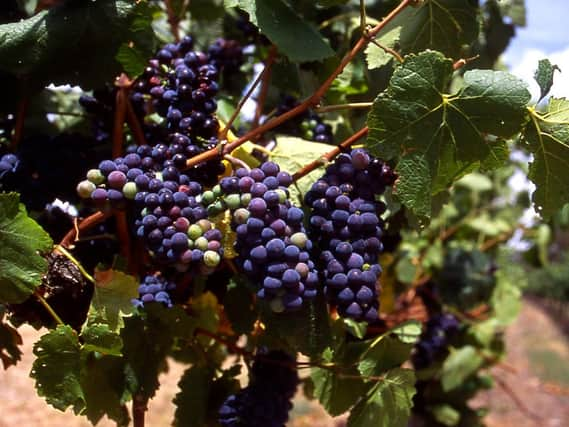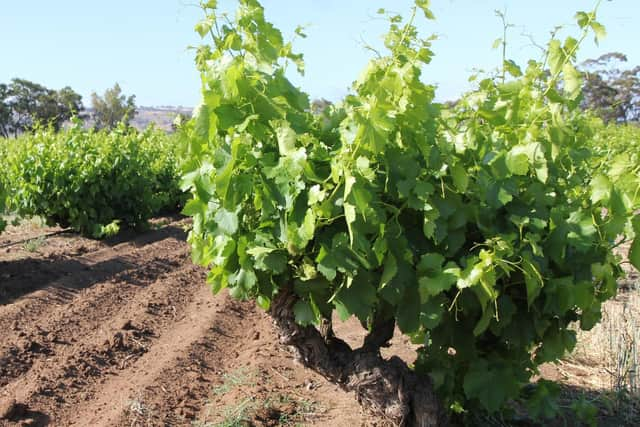With its vibrant raspberry flavours it's no surprise that Grenache is making a comeback


To be honest nearly every grape now has its own specific day of celebration, which is probably why I just glaze over when they are mentioned. However, if you are interested in lifting a glass to celebrate specific wines and grapes, next Saturday we have Pinotage Day, and on October 23 it will be World Champagne Day. And in November we can celebrate Merlot (7th), Tempranillo (12th) and Carmenère (24th).
But back to Grenache, which was celebrated by Wine Australia in the form of a Zoom tutored tasting of some rather good versions of the grape. While Grenache is grown in vineyards around the world, Australia has made particular headway in rehabilitating this variety from its former life as the main ingredient in fortified wines.
Advertisement
Hide AdAdvertisement
Hide AdIn the early days of viticulture, Australia made vast quantities of fortified wines which Britain consumed with enthusiasm, but by the 1960s that market was in decline. This meant that the Grenache, Syrah and Mourvèdre vines which had produced that wine were in danger of being pulled out in favour of more fashionable Chardonnay and Cabernet. With a government-sponsored vine-pull scheme, which paid growers to destroy their old vines, it is remarkable some remained in the ground, and we should be pleased they did. In 1985 Grenache was so poorly regarded that growers were paid just $190 a ton for it.


This year they were paid ten times that and in some particular sites, such as McLaren Vale, the price of Grenache was higher than Shiraz,” said Master of Wine and winemaker Giles Cooke.
One thing about Grenache is that it can survive without irrigation. As climate change rolls on, the supply of water and irrigation is a major factor in planting vines. But once Grenache has settled in, it sends its roots down deep and can produce a good crop. Some of the old vines that were spared during the vine-pull are now 70 years old and they have never had irrigation, so they have adapted to their location and still produce quality grapes with fabulous flavours.
“One thing that has changed is the way they are harvested,” said another Master of Wine, David Gleave, who was also on the Zoom chat. He runs a major importing company, Liberty Wines, and has been a force in developing the market for Australian Grenache wines. “When making fortified wines, the grapes need lots of flavour and sugar and since Grenache is so very easy to care for, it was often left until the end of harvest when the grapes were shrivelled and sweet. Now we have realised that old vines have finesse as well as flavour and so if they are picked at the right time they contribute wonderful textures and balance to a wine.”
Advertisement
Hide AdAdvertisement
Hide AdSo what is the flavour of Grenache? After tasting through a dozen top-flight McLaren Vale Grenache wines, I can definitely say it tastes of raspberries but not the ones that come from the supermarket in a plastic tray. The raspberries I am thinking of are the big, juicy ones you pick yourself, where you have to squeeze between the canes, releasing some leafy aromas, and then that burst of fabulous, sharp, intense raspberry aromas as you pick the berry. The taste follows on, still raspberry but black cherry flavours appearing with a hint of the soft earth that you have disturbed as you find your next fruit.
There is also a hint of savoury spice on the finish. It goes wonderfully well with casseroles and tagines, roast lamb and grilled sausages. I drank Grenache wines with lunch at d’Arenberg last year and they went with everything from Jerusalem artichokes and fillet steak to chocolate pud.
Most of the fabulous wines that I tasted on my Zoom call are not available in Yorkshire, although I will do my best to encourage suppliers to send them North. Here are some that I really recommend.
Summer Road Old Vine Grenache 2019, South Australia, Waitrose, down from £8.49 to £7.49 until October 13: An introduction to the taste of Grenache. Juicy and approachable, with lively red berry fruit.
Advertisement
Hide AdAdvertisement
Hide AdYalumba Old Bush Vine Grenache 2018, Barossa, Australia, Latitude Wine, Leeds, £16.99: Yalumba has some Grenache vines that were planted between 1898 and 1972. This wine is packed with lively crushed raspberry and dark cherry aromas with a rich, juicy palate of fleshy plum flavours and a soft, supple finish. Team this with meaty, lightly spiced dishes, such as top-notch sausages or a roast chicken with stuffing.
The Derelict Vineyard 2015, D’Arenberg, McLaren Vale, Field & Fawcett, £19.95: The name of this wine harks back to the days when no one wanted Grenache. D’Arenberg bought the vineyard and brought the vines back to life. The wine has masses of red and black fruit, with a seam of lively acidity, a whiff of forest floors and a food-friendly structure.
The Vagabond Old Vine Grenache 2015, Blewitt Springs, McLaren Vale, Australia, Ake & Humphris, Harrogate and Collingham, £20.99: Old vines grown in the deep sand and clay soils of Blewitt Springs produce some the best fruit of McLaren Vale. Wild fermented and aged in concrete eggs and puncheons, this a complex, vibrant wine with cherries, violets and light notes of spice.
Thistledown “She’s Electric” Old Vine, Single Vineyard Grenache 2018, McLaren Vale, Australia, Latitude Wine, Leeds £29.50: The name comes from a power line that runs close to the vineyard and one night a power surge took out the birds sitting on the line and set fire to some of the vines. Thistledown makes small parcels of wine from individual plots and this one is fabulous. Still red fruits, but deeper than others, with savoury complexity and a lightness of touch. Master of Wine Gilles Cooke is the winemaker.
Support The Yorkshire Post and become a subscriber today.
Advertisement
Hide AdAdvertisement
Hide AdYour subscription will help us to continue to bring quality news to the people of Yorkshire. In return, you'll see fewer ads on site, get free access to our app and receive exclusive members-only offers.
So, please - if you can - pay for our work. Just £5 per month is the starting point. If you think that which we are trying to achieve is worth more, you can pay us what you think we are worth. By doing so, you will be investing in something that is becoming increasingly rare. Independent journalism that cares less about right and left and more about right and wrong. Journalism you can trust.
Thank you
James Mitchinson
Comment Guidelines
National World encourages reader discussion on our stories. User feedback, insights and back-and-forth exchanges add a rich layer of context to reporting. Please review our Community Guidelines before commenting.